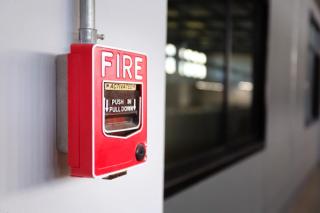
From feedstock to fuel: the pathway to decarbonising the aviation industry
- Post Date
- 26 August 2024
- Read Time
- 5 minutes

Sustainable Aviation Fuel (SAF) is a type of biofuel that has the similar properties as conventional jet fuel, but with a significantly smaller carbon footprint.
Why is SAF important?
SAF is a low-carbon alternative to conventional jet fuel that is accelerating the decarbonisation of the aviation industry. SAF is chemically identical to conventional jet fuel, hence it can be used as drop-in fuels without aircraft modification. SAF production not only reduces reliance on fossil fuels and enhances energy security, it also generates valuable coproducts such as renewable diesel, lubricants and light hydrocarbons.
Why invest in SAF?
There are highly valid reasons for investing in SAF, these include:
- It is the most viable near-term solution to reduce aviation’s carbon footprint while the industry explores longer-term alternatives like hydrogen or electrification with batteries.
- High growth potential of the SAF market due to a combination of factors such as environmental concerns and regulatory pressures, technology advancement and diverse feedstock options.
- Reduce Australia’s reliance on foreign oil and bolster energy security. Local SAF production will create a resilient and secure domestic fuel supply.
- Portfolio diversification and alignment with ESG principles, and carbon offset opportunities.
- Economic opportunities such as local job creation in production, distribution and allied industries.
SAF Production Pathways
How is SAF made?
SAF can be produced from a variety of feedstocks which fall into two main categories:
- Biogenic feedstocks such as crops, vegetable oils and fats, agricultural and forestry residues, solid wastes
- Non-biogenic feedstocks such as waste gases, hydrogen and CO2
The production pathways
- Hydrotreated esters and fatty acids (HEFA) pathway – This is a process that involves the conversion of oils and fats (or lipids) through a process that uses hydrogen. The hydrogen treatment process is used to remove oxygen and carbon double bonds from these biological feedstocks. Commercial aircraft can use a blend of up to 50% HEFA-produced SAF with traditional jet fuel
- Alcohol to jet (AtJ) – AtJ is a process that converts alcohols like ethanol and isobutanol, sourced from renewable sources like sugarcane, corn, or biomass, into a synthetic paraffinic kerosene suitable for use as sustainable aviation fuel. AtJ is a multi-step process of dehydration, hydrogenation, isomerisation and cracking reactions that produces hydrocarbon mixtures. AtJ-derived SAF can be blended with traditional jet fuel at a maximum ratio of 50% and is suitable for use in commercial aircraft.
- Fischer Tropsch and Hydrotreating – Feedstock such as municipal solid waste, agricultural wastes, forest wastes, wood, and energy crops are converted into synthetic gas through gasification. The synthetic gas, which is primarily a combination of carbon monoxide and hydrogen, is converted into hydrocarbon chains of very lengths under specific conditions of temperature and pressure. The Fischer Tropsch products are then refined and upgraded by hydrotreating to high quality paraffinic hydrocarbons suitable as SAF.
What’s happening across the market
- Qantas is ranked 25th globally in its total offtake volume, which stands currently at 234.41 million liters.
- At present, Qantas is sourcing SAF in London and Los Angeles but not in Australia.
- Qantas has committed to using 10% SAF in its overall mix by 2030, and upping it to about 60% by 2050.
- Qantas and Airbus joint investment of $2m in converting agricultural byproducts to 100m litres of SAF a year when it opens in 2026. Queensland Government also pledged $760,000 as part of an initial capital raising of $6m for the project.
Current Market Volume of SAF in Asia Pacific – Production Facilities (existing)
The CSIRO Sustainable Aviation Roadmap shows that through a combination of feedstocks and technologies, local feedstocks can meet a large and growing portion of Australia’s jet fuel demand.
Challenges and Opportunities
We have identified some of the challenges and opportunities including:
Challenges
High cost - SAF comes with green premium compared to conventional aviation fuel due to:
- Feedstock costs
- Additional processing steps
- Lack of economies of scale
- Competing feedstock uses
Opportunities
- Regional jobs and development
- Waste management benefits
- Growth opportunities e.g. technology advancement
- Investment and Research opportunities
Where to from here
A few key takeaways will need to be considered for SAF to be successful:
- There is no “silver bullet” technology however all SAF technologies should be commercialised
- The large price gap with conventional jet fuel is the biggest challenge for expansion
- HEFA will continue to be the biggest supplier of SAF up to 2030+
To realise the potential of sustainable aviation fuel, right combination of policies will be the most important driver of expansion.
How SLR can help
SLR can provide the following relevant services to support the development and implementation of SAF projects:
- Market Analysis
- Policy Analysis
- Feedstock Assessment
- Technology evaluation and selection
- Life Cycle Assessment
- Environmental Permitting
SLR project experience related to SAF
- Bioethanol Market Study – Cargill (UK)
- Sustainable Aviation Fuel Routes to Market Review (UK and Australia)
- Alternative Kiln Fuels Market Study (UK)
Reach out to our team for further information, or to discuss how we can help you with your next project.
Recent posts
-

-

Understanding sound flanking: Fire alarm speaker cable conduits in multi-family buildings
by Neil Vyas
View post -
